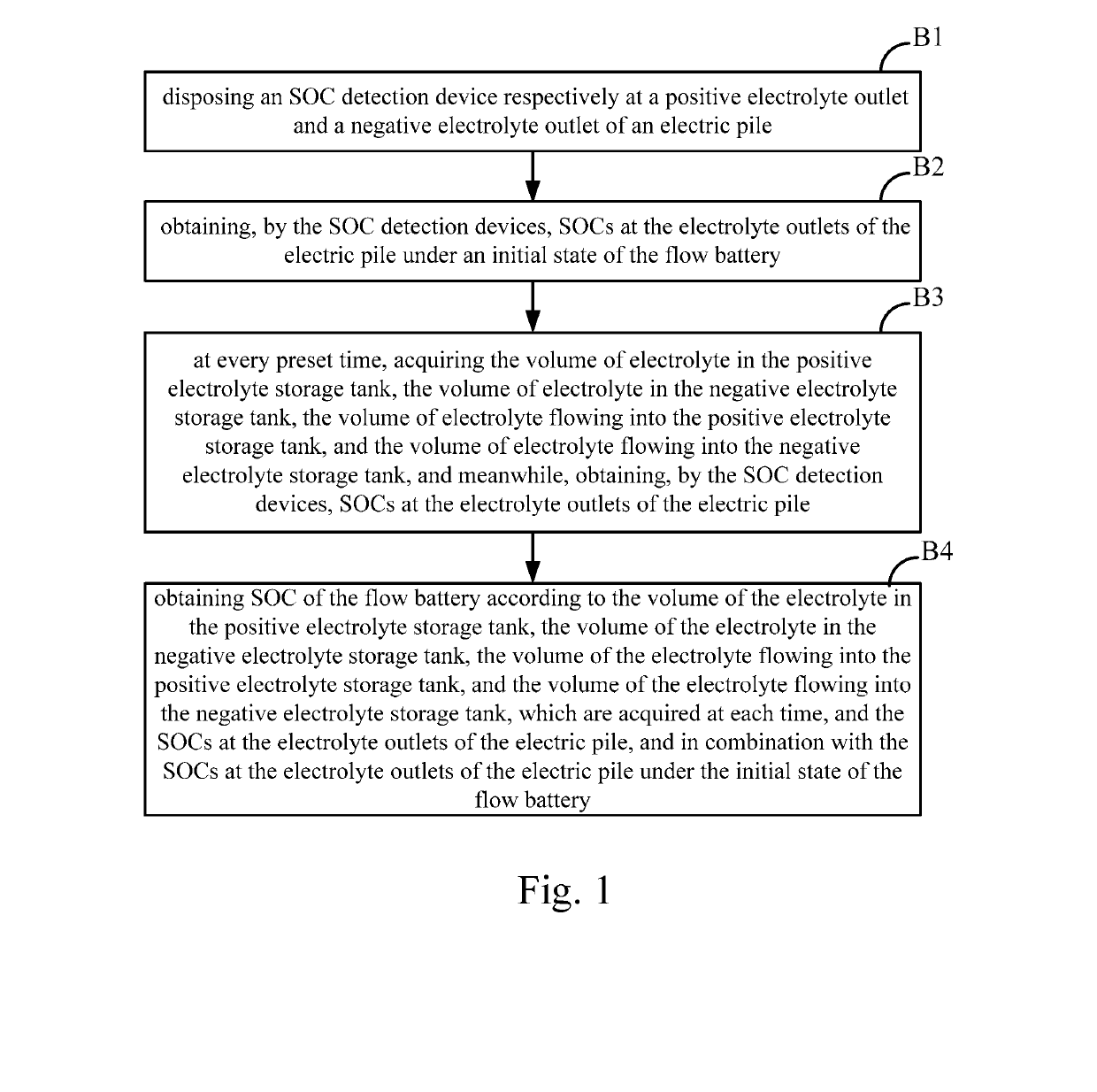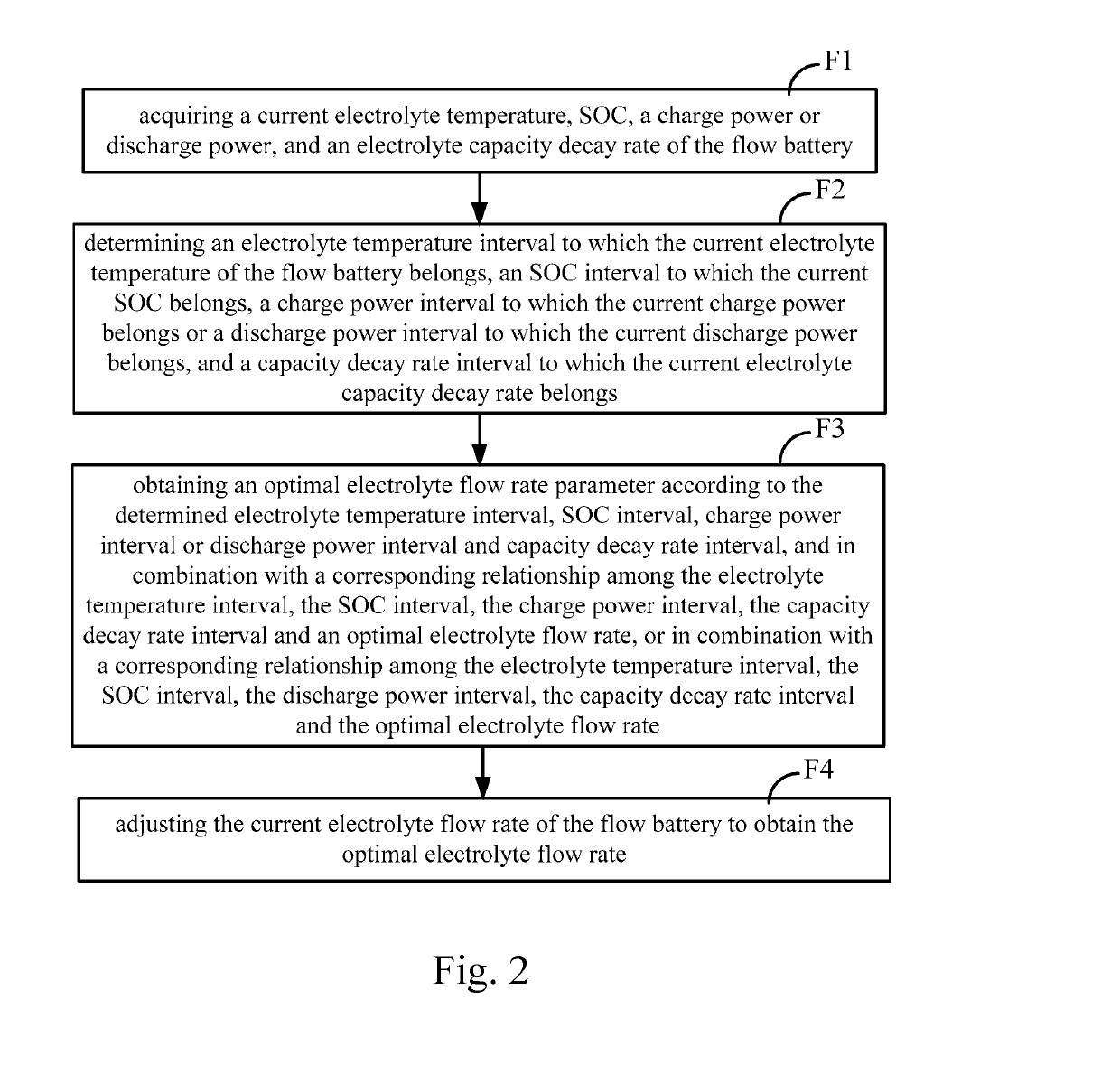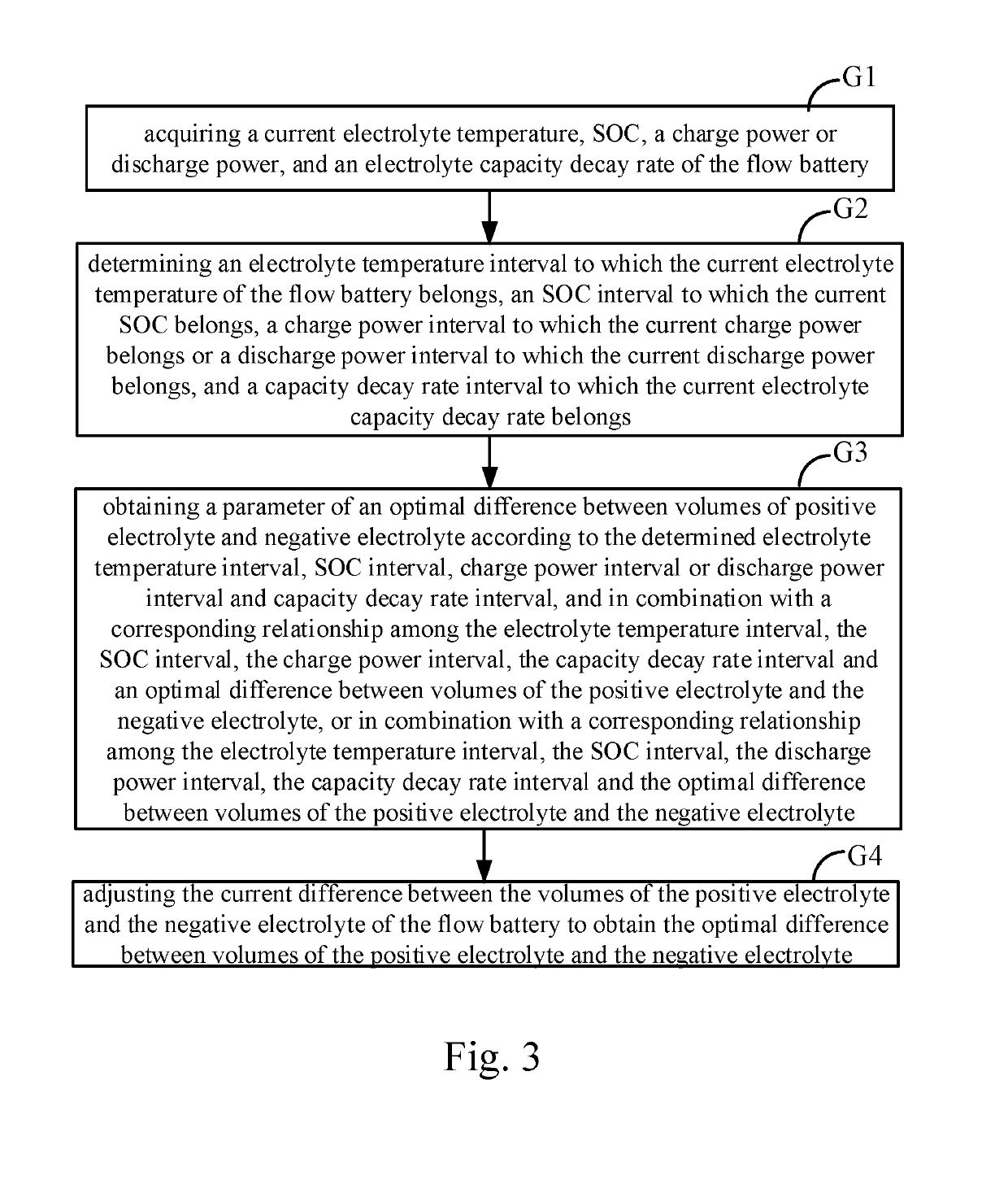Flow battery regulation and control method, regulation and control system thereof, and flow battery
- Summary
- Abstract
- Description
- Claims
- Application Information
AI Technical Summary
Benefits of technology
Problems solved by technology
Method used
Image
Examples
Embodiment Construction
[0108]In order to illustrate the objectives, technical solutions and advantages of the embodiments of the present invention more clearly, the technical solutions in the embodiments of the present invention are clearly and completely described below with reference to the accompanying drawings in the embodiments of the present invention. It is apparent that the described embodiments are a part of the embodiments of the present invention, rather than all of the embodiments. All other embodiments obtained by those of ordinary skill in the art based on the embodiments of the present invention without paying creative work fall within the protection scope of the present invention.
[0109]As shown in FIG. 1, a flow battery control method comprises the following steps: step B1: disposing an SOC detection device respectively at a positive electrolyte outlet and a negative electrolyte outlet of an cell stack;
[0110]step B2: obtaining, by the SOC detection devices, SOCs at the electrolyte outlets ...
PUM
 Login to View More
Login to View More Abstract
Description
Claims
Application Information
 Login to View More
Login to View More - R&D
- Intellectual Property
- Life Sciences
- Materials
- Tech Scout
- Unparalleled Data Quality
- Higher Quality Content
- 60% Fewer Hallucinations
Browse by: Latest US Patents, China's latest patents, Technical Efficacy Thesaurus, Application Domain, Technology Topic, Popular Technical Reports.
© 2025 PatSnap. All rights reserved.Legal|Privacy policy|Modern Slavery Act Transparency Statement|Sitemap|About US| Contact US: help@patsnap.com



